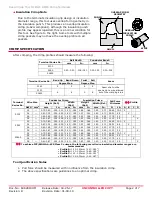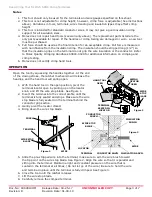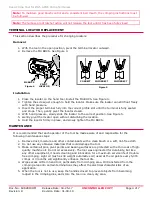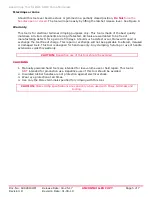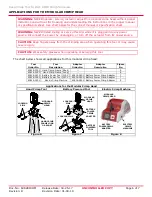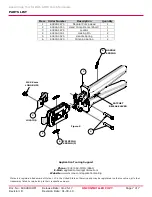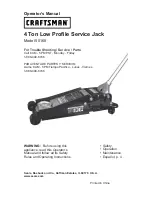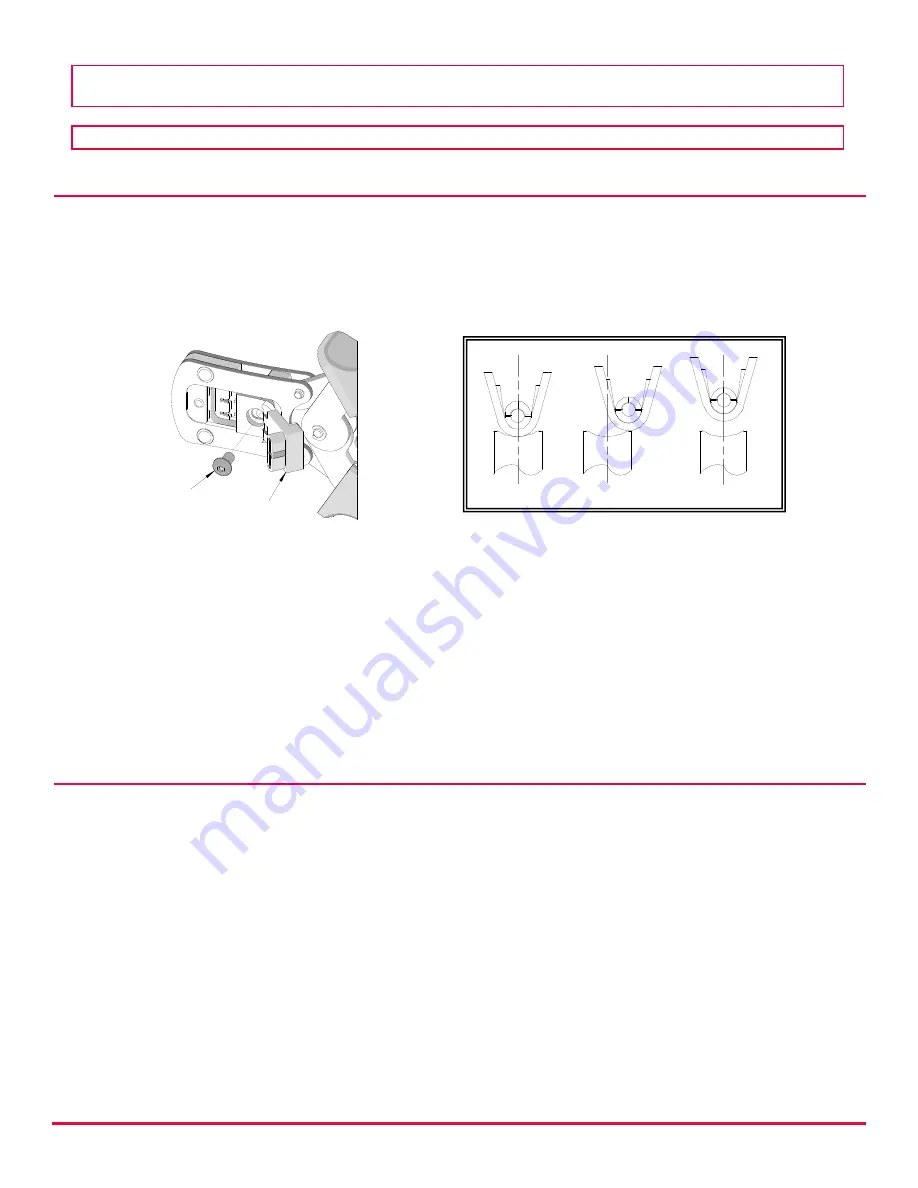
Hand Crimp Tool for Pitch SPOX Crimp Terminals
Doc. No: 6382819HM
Release Date: 04-25-17
UNCONTROLLED COPY
Page 4 of 7
Revision: D
Revision Date: 01-08-19
INCORRECT
Figure 5
CORRECT
INCORRECT
M4 BHCS
PIVOT
LOCATOR
Figure 4
Note:
To maintain good brush control and a consistent bell mouth, the crimping instructions must
be followed.
Note:
The tamper-proof ratchet action will not release the tool until it has been fully closed.
TERMINAL LOCATOR REPLACEMENT
This section describes the procedure for changing locators:
Removal
1.
With the tool in the open position, pivot the terminal locator outward.
2.
Remove the M4 BHCS. See Figure 4.
Installation
1.
Place the locator on the hand tool. Install the M4 BHCS. See Figure 4.
2.
Tighten the screw just enough to hold the locator. Make sure the locator can still float freely
with hand pressure.
3.
Insert the proper terminal fully into the correct profile slot until the terminal is fully seated
and stops. Then, gently pivot the locator closed.
4.
With hand pressure, slowly slide the locator to the correct position. See Figure 5.
5.
Gently pivot the locator open without disturbing the location.
6.
Hold the locator firmly in place, and slowly tighten the M4 BHCS.
MAINTENANCE
It is recommended that each operator of the tool be made aware of and responsible for the
following maintenance steps:
1.
Remove dust, moisture and other contaminants with a clean brush or a soft, lint-free cloth.
2.
Do not use any abrasive materials that could damage the tool.
3.
Make certain all pins, pivot points and bearing surfaces are protected with a thin coat of high-
quality machine oil. Do not oil excessively. The tool was engineered for durability, but like
any other equipment, it needs cleaning and lubrication for a maximum service life of trouble-
free crimping. Light oil (such as 30 weight automotive oil) used at the oil points every 5,000
crimps or 3 months will significantly enhance the tool life.
4.
Wipe excess oil from hand tool, particularly from crimping area. Oil transferred from the
crimping area onto certain terminations may affect the electrical characteristics of an
application.
5.
When the tool is not in use, keep the handles closed to prevent objects from becoming
lodged in the crimping dies, and store the tool in a clean, dry area.


